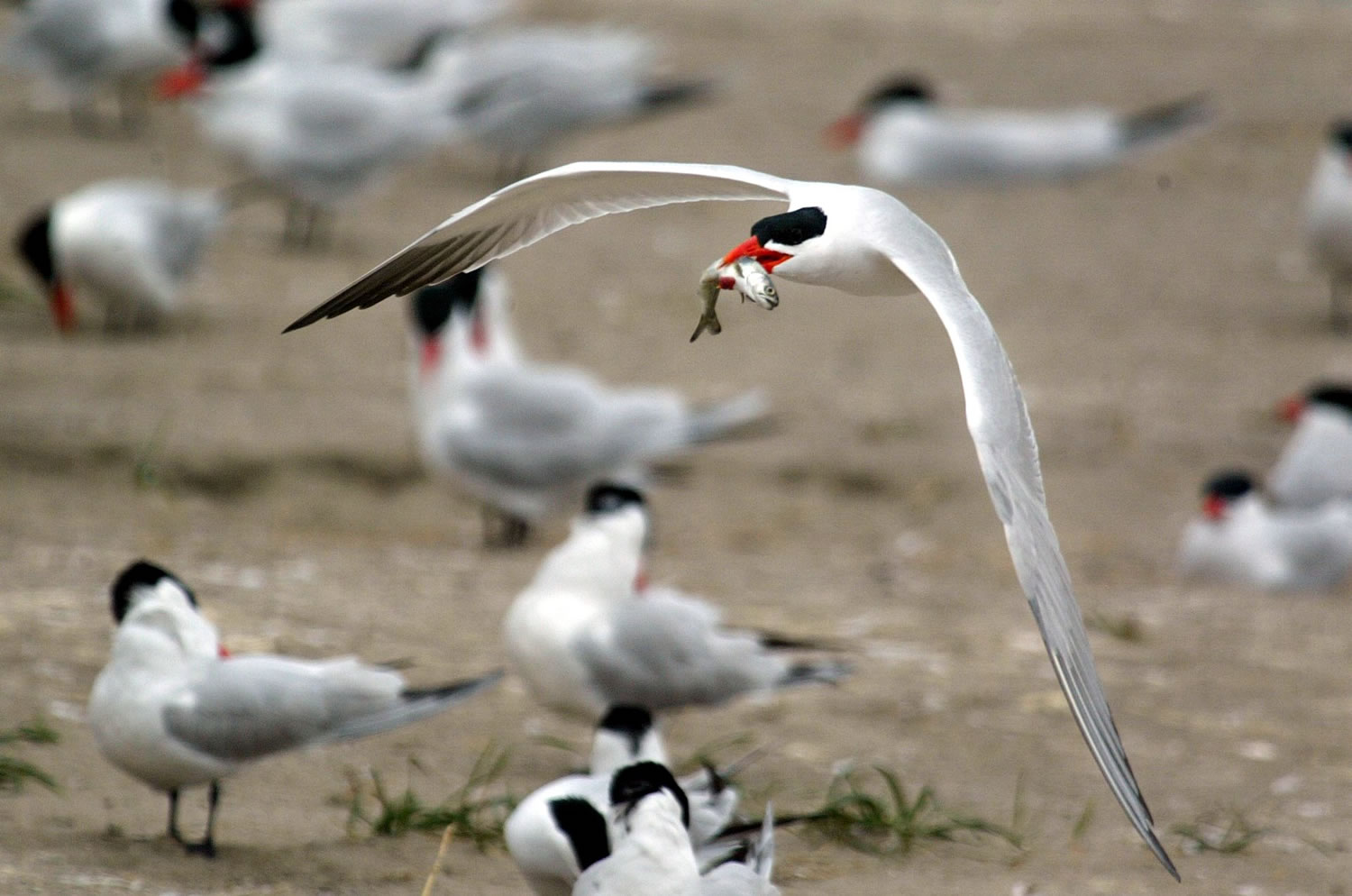Terns and cormorants in the Columbia River estuary are taking a high toll of young salmon and steelhead, including wild Wind River summer steelhead.
According to Thomas Buehrens, a research scientist for the Department of Fish and Wildlife, almost 17,000 young, outbound wild Wind River steelhead had passive integrated transponder tags inserted between 2003 and 2012.
Annually, between 6 percent and 14 percent of those tags have been found on East Sand Island between Chinook and Ilwaco in Washington. The 10-year average is 9 percent.
Buehrens said the percentage of wild Wind steelhead getting eaten in the estuary most likely is even higher. Not all tags on the island are recovered. If 65 percent are recovered, a feasible number, then the average is 15 percent, he said.
Even 15 percent could be conservative, because terns and cormorants defecate at other locations than just East Sand Island, he added.
The Wind River was one of the other Southwest Washington streams designated as a wild steelhead gene bank.
The designation formalizes a long-standing condition, as no hatchery steelhead have been stocked in the Wind River since 1997.
No cut to tern habitat — Federal regulators have decided not to shrink Caspian tern habitat on East Sand Island.
The U.S. Army Corps of Engineers proposed the reduction in January. But the Corps recommended no action in the environmental review released last week.
The proposal was to cut nesting habitat from 1.58 acres to 1.08 acres to decrease the number of birds and protect fish.
The Corps said the drought conditions could result in the terns just relocating farther upstream.
By keeping the habitat intact, officials hope to keep more terns in the lower estuary where juvenile salmon and steelhead represent less of a percentage of their diet than farther upriver.
Cormorants to get hassled — Hazing of cormorants will begin soon at several areas along the Oregon coast to try to improve survival of young salmon and steelhead.
Double-breasted cormorants are large fish-eating birds that are particularly prevalent in estuaries during April through September.
Hazing will continue in most areas through May 31 in the Nehalem, Nestucca and Coquille river estuaries, plus Tillamook and Alsea bays. Hazing could continue through July 31 in Astoria.
Hazing will involve driving at the birds in small boats and, in some estuaries, firing at them with small pyrotechnics. Work will generally take place in the morning and evening, when the birds feed most actively.
Young fish tend of linger in estuaries as they make the transition from fresh to saltwater. The hazing is designed to disrupt the birds’ feeding patterns long enough to give the young fish a chance to pass through the estuaries unharmed.
Cormorants are protected by international treaty and federal law.




